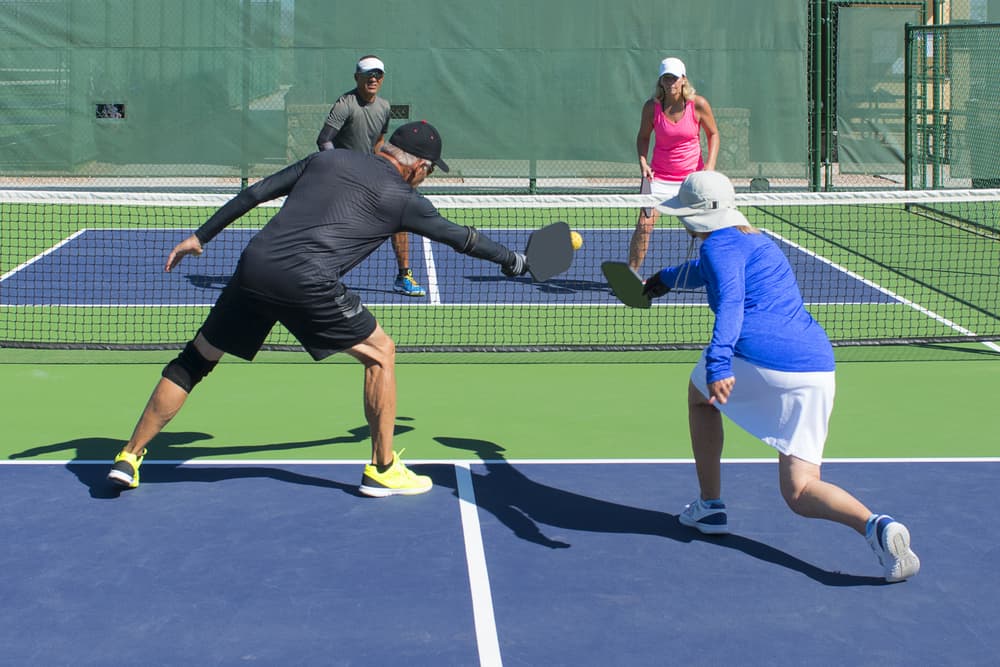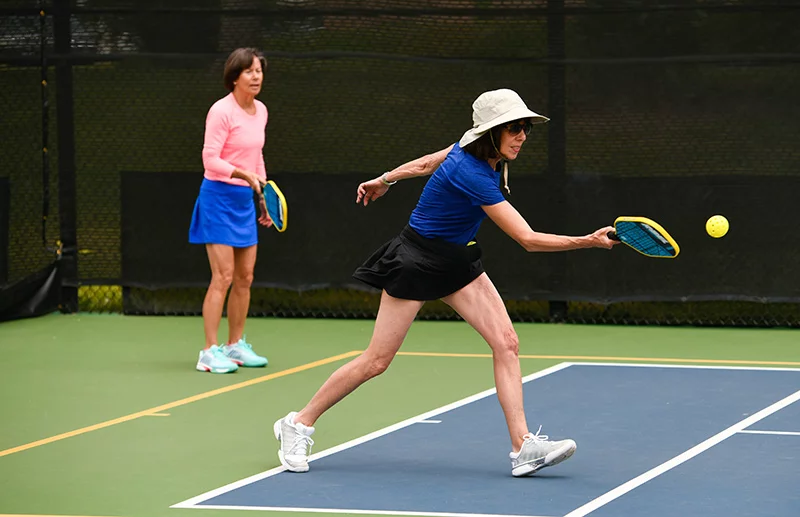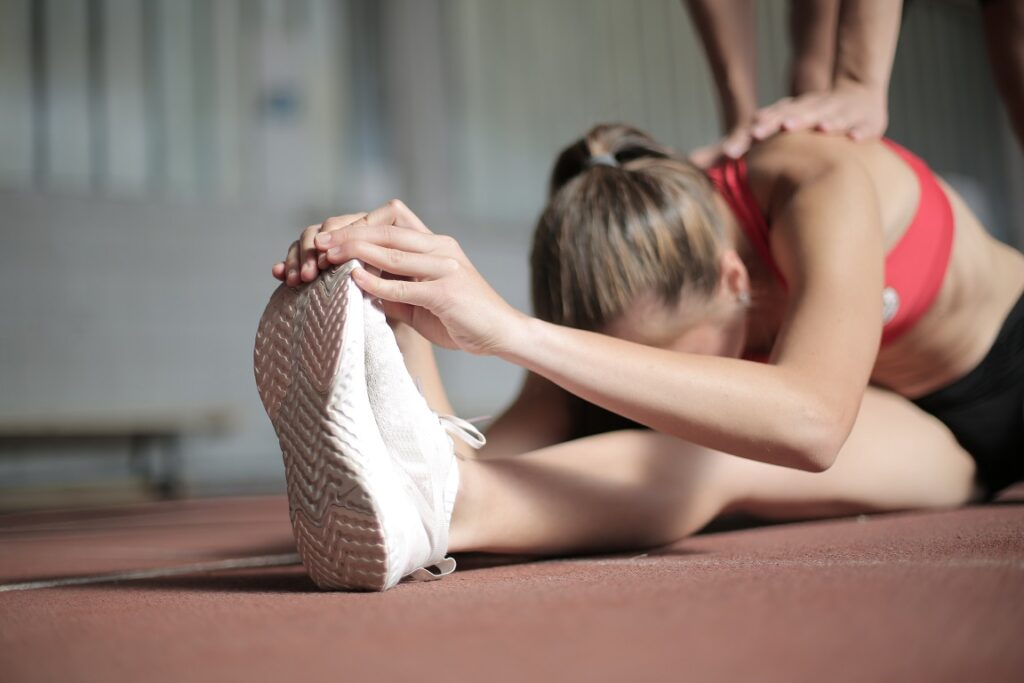Introduction
Pickleball, a fast-growing sport, has captured the hearts of players worldwide with its unique blend of tennis, badminton, and table tennis. What’s even more remarkable is that this dynamic game is incredibly well-suited for people over 50, offering fun and competitive gameplay for individuals of all ages. In this comprehensive guide, we will delve into the world of pickleball, covering everything from selecting the perfect paddle to mastering essential techniques and effective doubles strategies – all designed to make the game a truly fantastic experience for those in their golden years.


How to Choose the Perfect Pickleball Paddle
Pickleball paddles come in various materials, each with its unique characteristics, catering to players of all skill levels – from beginners to advanced players.
Beginner Paddles
- Onix Graphite Z5: A great entry-level option, the Onix Graphite Z5 offers a graphite face for enhanced ball control and a wide body shape for a larger sweet spot, ideal for beginners still refining their shots.
- HEAD Radical Elite: Designed for novice players, the HEAD Radical Elite features a polymer core for excellent touch and maneuverability, making it easy to learn and enjoy the game.
- Niupipo Pickleball Paddle: The Niupipo Pickleball Paddle is another excellent choice for beginners, featuring a polymer core and graphite face for a good balance of power and control. Its cushioned grip provides comfort during gameplay.
Intermediate Paddles:
- Selkirk NEO Composite: The Selkirk NEO Composite combines a polymer honeycomb core with a composite face, providing a good balance of power and control, suitable for players transitioning from beginner to intermediate level.
- Engage Encore Pro: With its proprietary ‘ControlPro’ polymer core, the Engage Encore Pro offers precise shot placement and is preferred by players looking to refine their techniques.
- Wilson Tour Pro: The Wilson Tour Pro features a midweight design, providing intermediate players with a good blend of power and control, making it a versatile choice for improving players.
Advanced Paddles:
- Paddletek Tempest Wave Pro:
The Paddletek Tempest Wave Pro features a textured graphite surface and a polymer core, catering to advanced players seeking enhanced spin control and power for competitive play. - Selkirk AMPED Invikta X5: Designed for the most skilled players, the Selkirk AMPED Invikta X5 boasts an elongated shape, allowing for a larger surface area and unmatched power and control.
- Selkirk AMPED S2: The Selkirk AMPED S2 features a balanced weight distribution, ideal for advanced players seeking a precise and versatile paddle for any playing situation.
- Paddletek Tempest Wave Pro:
Mastering Essential Pickleball Techniques
- The Serve:
- What to Do: Use an underhand serving motion with a smooth and controlled swing. Aim to land the serve deep into the opponent’s court, close to the baseline, to make it difficult for them to attack. Vary the speed and spin of your serves to keep opponents off-balance.
- What to Avoid: Avoid committing foot faults by maintaining proper foot positioning during the serve. Refrain from stepping over the baseline while serving, as this would result in a fault.
- The Dink:
- What to Do: Keep a soft and relaxed grip on the paddle. Aim to place the dink precisely over the net and just beyond the reach of the opponent’s paddle. Use your wrists for better control and finesse.
- What to Avoid: Avoid hitting the ball too hard or too high, as this gives the opponent an opportunity to attack. Also, refrain from hitting the dink into the net, as this results in a point for the opponent.
- The Third Shot Drop:
- What to Do: Execute a soft and controlled shot with a high arc, aiming to land the ball in the opponent’s non-volley zone. Move forward towards the net after hitting the third shot to gain a strategic position.
- What to Avoid: Avoid rushing the third shot drop, as a hurried shot may result in a weak return that the opponent can easily attack. Additionally, refrain from hitting the ball too high, giving the opponent an opportunity to put it away.
- The Lob:
- What to Do: Aim for a high and deep lob over the opponent’s head to force them to retreat to the baseline. Use the lob strategically to reset the rally and regain a better court position.
- What to Avoid: Avoid using the lob excessively, as it can become predictable and give the opponent an opportunity to set up an aggressive attack. Also, refrain from hitting the lob too short, allowing the opponent to easily put it away.
- The Groundstroke:
- What to Do: Maintain a balanced stance and use your legs to generate power. Keep your eye on the ball and make contact in front of your body. Follow through with your swing for control and accuracy.
- What to Avoid: Avoid using excessive power on every groundstroke, as this may lead to unforced errors. Also, refrain from lunging for the ball, as it can affect your balance and positioning for the next shot.
- The Volley:
- What to Do: Keep your paddle in a ready position and be prepared to react quickly to the ball. Use a compact swing for volleys to maintain control. Move your feet to get into a better position for the volley.
- What to Avoid: Avoid standing too far back from the net, as it reduces your reach for volleys. Also, refrain from swinging too forcefully on volleys, as it can lead to mis-hits and loss of control.
- The Overhead Smash:
- What to Do: Position yourself close to the net and time your swing to meet the ball at its highest point. Swing the paddle aggressively downward to generate power and put the ball away.
- What to Avoid: Avoid attempting an overhead smash from too far behind the baseline, as it can result in a difficult and inaccurate shot. Also, refrain from telegraphing your smash, as it allows the opponent to prepare for the shot.
- Footwork:
- What to Do: Stay light on your feet and use quick, small steps to move around the court. Anticipate the ball’s trajectory and position yourself to intercept it. Pivot on your feet to change direction efficiently.
- What to Avoid: Avoid standing flat-footed, as it makes it challenging to react quickly to the ball. Also, refrain from taking large, slow steps, as it can leave you out of position for the next shot.
Pickleball Doubles Strategies for Seniors
Playing pickleball with a partner on your team adds a new level of excitement and complexity to the game. It transforms the experience from simple fun into a competitive and strategic match, requiring advanced pickleball strategies to excel and perform at your best with your partner.
Hitting Strategies for Doubles: Mastering Accuracy and Control
In a doubles game, proper and accurate hitting is crucial for a successful pickleball match, regardless of whether your team is serving or returning. Even seasoned players understand that the best pickleball hitting techniques involve simplicity, focusing on shots that find their mark on the court.
To start the game off on the right foot, aim to get the ball deep into the court, keeping your opponent on their toes from the very beginning. Take into account your opponents’ weaknesses when executing your serve; if they struggle with back shots, consider delivering a slightly harder serve to exploit this weakness. Remember, simplicity is key in hitting strategies for doubles.
Return Strategies for Doubles: Keeping Opponents on Their Toes
Once the ball is in motion, the returning hitting strategy comes into play. A smart tactic is to return the ball towards the center of the court, enticing both opposing team members to move towards the middle to make their shots. This strategic placement keeps your opponents on their toes and sets the stage for the next moves.
Third Shot Strategies for Doubles: A Pivotal Moment
The third shot is a crucial point in any pickleball match, marking a shift in momentum. There are several popular types of shots that players often use as their pickleball third shot strategy. The Middle Drop Shot is among the most reliable choices, involving a low hit over the net right into the middle of the court.
Alternatively, new players may opt for a Hard Hit, aiming for power and distance. However, it’s important to recognize that points in pickleball are often earned at the net rather than from the baseline. As you progress, consider incorporating intermediate third shot strategies, such as the Dink, Lob, Down the Line, Side Drop Shot, or Drilling the Net Person, to elevate your skills and tactical repertoire.
Keep the Game Going: Maintaining Momentum
After the initial three introductory hits, the key is to keep the ball in motion and the game flowing. In pickleball, many points are won through errors, making quick and continuous gameplay essential. Aim for deep middle shots to sustain the game’s energy and keep the pressure on your opponents.
Identifying Opponent Weaknesses: A Strategic Advantage
During warm-ups, keen observation of your opponents can reveal their weaknesses. Pay attention to the way they hold and launch their paddle, as it can provide valuable insights into their style of play. Armed with this knowledge, you can prepare and adjust your defense accordingly.
Pickleball, Not Catch: Playing with Purpose
While it may be tempting to engage in a repetitive back-and-forth pattern with your partner, this can lead to a lackluster and anticlimactic game. Instead, focus on purposeful play, aiming the ball downward with intention and strategy.
Think Ahead and Stay Agile: Winning through Quick Thinking
A fun and energetic game of pickleball requires players to be agile both physically and mentally. Stay light on your feet and responsive to all types of hits, ready to move quickly around the court when necessary. Having a reliable pair of pickleball sneakers can enhance your performance. Additionally, top players anticipate their opponent’s next move, acting proactively to counter their strategies and gain the upper hand.
By implementing these doubles strategies, you and your partner can elevate your pickleball game to new heights, enjoying a dynamic and competitive experience on the court. Master the art of precision, strategy, and anticipation to forge a formidable doubles team that can take on any challenge and emerge victorious in every match.
Conclusion
Pickleball is a fantastic sport that offers boundless enjoyment and camaraderie, particularly for people over 50. By selecting the right paddles, mastering essential techniques, and implementing effective doubles strategies, seniors can elevate their pickleball experience to new heights. Embrace the joy of pickleball and let the game become a delightful and fulfilling part of your active lifestyle, proving that age is merely a number on the court!


